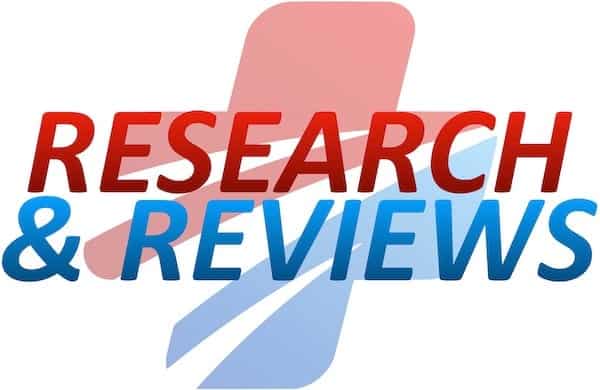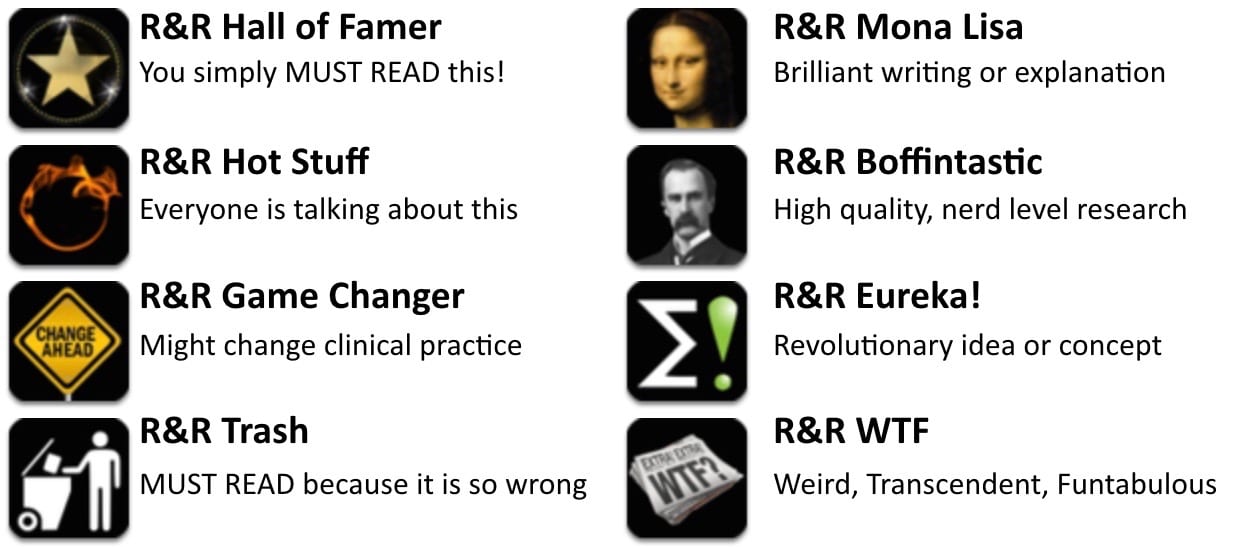R&R In The FASTLANE 188
Welcome to the 188th edition of Research and Reviews in the Fastlane. R&R in the Fastlane is a free resource that harnesses the power of social media to allow some of the best and brightest emergency medicine and critical care clinicians from all over the world tell us what they think is worth reading from the published literature.
This edition contains 5 recommended reads. The R&R Editorial Team includes Jeremy Fried, Nudrat Rashid, Soren Rudolph, Anand Swaminathan and, of course, Chris Nickson. Find more R&R in the Fastlane reviews in the : Overview; Archives and Contributors
This Edition’s R&R Hall of Famer
reund Y, Lemachatti N, Krastinova E. Prognostic Accuracy of Sepsis-3 Criteria for In-Hospital Mortality Among Patients With Suspected Infection Presenting to the Emergency Department. JAMA. 2017; 317(3):301-308. PMID: 28114554
- This is the first prospective validation of qSOFA. It’s performance was very similar to the retrospective derivations. The authors did all the right things: this was a prospective trial, enrolling consecutive patients presenting to the ED in whom the treating clinician was concerned for an infection. Overall, qSOFA was more accurate than SIRS, but less sensitive. I love that qSOFA makes sepsis an entirely clinical diagnosis, but I am still not sure that there is sufficient evidence to support overhauling our triage algorithms.
- Recommended by: Justin Morgenstern
Khanna A, English SW, Wang XS, et al. Angiotensin II for the Treatment of Vasodilatory Shock. N Engl J Med. 2017. PMID: 28528561
- Angiotensin II agonists might be the next-generation of vasopressors, but there’s no telling whether they’ll improve overall survival.
- Recommended by: Ryan Radecki
Driver B et al. The Bougie and First-Pass Success in the Emergency Department. Ann Emerg Med 2017. PMID: 28601269
- The gum elastic bougie has become a common rescue device in airway management but what about use as the primary modality? This retrospective review showed increased 1st pass success with a bougie facilitated approach (95% vs. 86%). However, the study is confounded by the absence of randomization, retrospective analysis and, user skill with bougie (single center study where 80% of RSI was bougie 1st). The bottom line, once again, is that 1st pass success is highest with the device you are most facile with.
- Recommended by: Anand Swaminathan
Smeeing DP, van der Ven DJ, Hietbrink F. Surgical Versus Nonsurgical Treatment for Midshaft Clavicle Fractures in Patients Aged 16 Years and Older: A Systematic Review, Meta-analysis, and Comparison of Randomized Controlled Trials and Observational Studies. The American journal of sports medicine. 2016. PMID: 27864184
- This is a systematic review and meta-analysis that includes 8 RCTs and 12 observational studies. Contrary to what we were all taught, this meta-analysis concludes that surgical management of mid-shaft clavicle fractures decreases non-unions (the primary outcome; odds ratio 0.18 95% CI 0.10-0.33). The absolute numbers here would appear to be clinically significant, with 10.5% of the non-surgical group experiencing a non-union, as compared to only 1.4% of the surgical group. That rate of nonunion seems high to me, but I don’t see these patients in follow up, so I am not sure. When looking at only the high quality studies, surgery also appeared to improve malunions and return to work. Unfortunately, they don’t discuss harms at all. Bottom line: Although we don’t make the decision about surgery in the ED, we shouldn’t be surprised if more of these patients end up with surgical management, and we should counsel them appropriately.
- Recommended by: Justin Morgenstern
Balamuth F, Alpern ER, Abaddessa MK, et al. Improving Recognition of Pediatric Severe Sepsis in the Emergency Department: Contributions of a Vital Sign-Based Electronic Alert and Bedside Clinician Identification. Ann Emerg Med. 2017; PMID: 28583403
- An EHR-based triage sepsis alert results in more patients on a sepsis pathway, but many false-positives and difficult to detect overall benefit (if any).
- Recommended by: Ryan Radecki
Community emergency physician with a passion for education, evidence based medicine, and life, working in the Greater Toronto Area (that’s in Canada) | @First10EM | Website |






